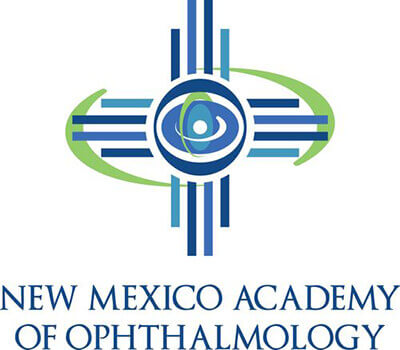Guard your vision during the coronavirus pandemic

Published in the Albuquerque Journal on Friday, April 24th, 2020

As information about COVID-19 comes at a furious pace, at times offering conflicting and confusing advice, the New Mexico Academy of Ophthalmology and the American Academy of Ophthalmology want to share what we know right now about protecting your vision and your health during the coronavirus pandemic.
1. AVOID TOUCHING YOUR EYES: By now you’ve heard about the importance of hand washing, coughing into your elbow, and keeping your hands away from your face and eyes. The last one is easier said than done, right? Here’s a suggestion, switch from contact lenses to glasses for the time being. Substituting glasses for lenses can decrease irritation and make you pause before touching your eyes. If you continue wearing contact lenses, follow standard hygiene practices to limit your chances of infection.
2. PINK EYE IS A COVID-19 SYMPTOM, BUT IT’S RARE: Studies show about 1 to 2 percent of reported coronavirus cases show symptoms of conjunctivitis, better known as pink eye. If you or a family member gets pink eye, don’t panic, especially if you’re not experiencing the more common coronavirus-related symptoms, such as a dry cough, shortness of breath and fever. Viral conjunctivitis is very common, plus it’s allergy season. Mild cases of conjunctivitis can usually be managed at home with cold compresses and artificial tears. If symptoms continue or become severe, consult with your doctor to determine if you need an in-person office visit.
3. THE MALARIA DRUGS BEING STUDIED TO TREAT CORONAVIRUS ARE UNLIKELY TO DAMAGE THE EYES IN THE SHORT TERM: Patients who rely on hydroxychloroquine to treat autoimmune conditions, such as lupus or rheumatoid arthritis, rarely experience eye damage.
According to one study, only about 1 to 2 percent of patients develop retinalproblems during a 5-year course of treatment. COVID-19 patients may receive a high dose of chloroquine or hydroxychloroquine, but they are only treated for a short period of time (one to two weeks) under the direct supervision of a doctor in a hospital setting.
Damage to the eyes is unlikely to occur in this scenario.
4. HAVE AN UPCOMING ROUTINE EYE CARE APPOINTMENT? CALL YOUR OPHTHALMOLOGIST FIRST: Most ophthalmologists are performing emergency eye care only to keep patients safe and to conserve much-needed medical supplies.
If you receive regular treatments to maintain your vision, such as injections for macular degeneration, talk to your ophthalmologist.
Although clinics are not seeing as many patients during this crisis, your ophthalmologist will not let you go blind, and if they want you to be seen in the clinic it is because you may have a sight threatening condition that requires continued evaluation and treatment.
5. MAKE SURE YOU HAVE REFILLS OF CRITICAL MEDICATIONS: If you take medicated eye drops or other medical prescriptions, that you cannot or should not go without, make sure you have enough to get by if quarantined or if supplies become limited. Your ophthalmologist or pharmacist may be able to help obtain approval through insurance.
6. CONSIDER HOME REMEDIES FOR NON-URGENT RELIEF: Some eye conditions, such as dry eye or eye strain, can be treated with artificial tears and rest. If symptoms persist, call your ophthalmologist. Many are conducting appointments through telehealth.
Sean Rivera, MD, Vice President of the New Mexico Academy of Ophthalmology would also like to emphasize that “while most people with COVID-19 will have mild or no symptoms, some will have severe or critical illness that may be fatal.
Social distancing and restricted access to routine healthcare and elective procedures, like cataract surgery, has been very disruptive, but the sacrifices we have all made has been an effective strategy to ultimately save lives. I would encourage everyone to stay up to date with the guidance provided by the New Mexico Department of Health and the CDC.”
To keep up with the latest information for maintaining your eye health during the pandemic, visit: aao.org/eye-health/coronavirus.
Also, visit the New Mexico Academy of Ophthalmology at nmao.org.
